"The International Peace Pagoda Project (IPPP) is a Buddhist construction project to promote world peace, universal healing, international harmony, & enlightenment. //
I would like to introduce the Venerable Sayadaw U Thila Wunta who has contributed so much with respect to this precious perspective. He was my teacher when I was a child growing up in Rangoon, Burma (now called Yangon, Myanmar). In those early days, in the 1950's & 1960's, he was an eminent Buddhist monk, while I was a very young student of the Dharma. The Venerable Sayadaw’s teaching endeavours are centred in the Dat Pon Zon Aung Min Guang Monastery (named after the Venerable Sayadaw’s teacher) in Yangon. I left Myanmar in the early 1970's, immigrating to Canada to pursue my integrative medical career. I temporarily lost direct personal contact with the Venerable Sayadaw, but maintained the spiritual (karma) link over the years by following his Buddhist teachings. In April 1986, our karma paths/links crossed once again directly. I was honoured to meet with the Venerable Sayadaw, when he came to Edmonton, Alberta (Canada), and constructed a stupa at my home, in my backyard. //
Constructing stupas is the Venerable Sayadaw’s vision and mission in life, which was given to him by his eminent Buddhist teacher, mentor and master, the Venerable Bodaw Aung Min Guang. The term 'stupa' derives from the ancient Sanskrit language, meaning the crown of one’s head. A stupa, a dome-shaped monument, may be a large and elaborate or just a simple humble village pagoda. Whatever the exact shape, size, place, position or monetary worth, a stupa is a vehicle/structure for enfolding and housing precious relics in commemoration of Buddhism in the interest of promoting world peace, harmony & healing. These relics represent samadhi — the most pure crystallization and fruit of devout prayer and meditation in the sprit of universal compassion cultivated by various eminent monks/masters and their devoted students over many years, decades, centuries and millennia. The Venerable Sayadaw has constructed many stupas, mainly in Myanmar, but also in several other countries such as Canada, Australia, New Zealand & South Africa. He carefully selects a suitable site based on the positive 'spirit of place' (in traditional Chinese medicine this is termed good Feng Shui). With his assistants & supporters, he arranges for a local group to help in the construction of the stupa by supplying the stone, bricks, mortar, lime, wood, water & other basic building materials. He masterminds the construction of the stupa within a couple of weeks with the heartfelt help of a charitable group. During the construction phase, he meditates & chants mantras, sending mingala (positive healing energy) to the environment. After the stupa has been built & the relics have been properly selected and placed, he relies on volunteers to maintain the site as a centre of healing energy for the benefit of all sentient beings. //
For example, on Galiano Island, British Columbia (Canada), the Crystal Mountain Buddhist group constantly maintains the stupa that the Venerable Sayadaw constructed in 1982 (www.crystalmountain.org). He is also the guiding light with respect to the Dharma Centre of Canada in Kinmount, Ontario (www.dharmacentre.org) and the Wangapeka Study and Retreat Centre in New Zealand (http://wangapeka.nelson.org.nz/about). //
As for myself, my family and our friends and colleagues, we constantly maintain the stupa that the Venerable Sayadaw constructed at my home in Edmonton. It was my honour to continue and keep my childhood commitment to help the Venerable Sayadaw construct a stupa in South Africa in a carefully selected locale near Cape Town, namely, Barrydale (www.barrydale.co.za/activitiesframe.htm) in December 2000, Brazil in 2006 and in Myanmar in 2008."
"U Thila Wunta [1912-2011], the teacher of Namgyal Rinpoche [1931-2003], came from the Mon State of Burma. He was born 28 June 1912. He began his training at a monastery school in 1919. At the age of 15 he took the vows of a monk. In May 1932 he received full ordination as a Bhikshu in the Theravada Order under the direction of Kyaw Sayadaw.1 He spent his first three month retreat at Htan-bin Monastery near Wekalaung Village. //
Between the years 1933 and 1938 he practiced meditation under the supervision of Sayadaw U Narada of Payagyi Monastery, Sayadaw U Ariya of Ahlei Taik Monastery, and Sayadaw U Pyin Nyein Da of Aung Mye Bonzan Monastery. These three Sayadaws were all renowned scholars and meditators. //
U Thila Wunta settled for some time near the great Shve Dagon Pagoda, in Rangoon. It is generally believed by Buddhists that certain holy sites or "power spots" are especially conducive for progress in meditation. Experience has shown that meditation is not only easier, but that insight dawns much faster, when practice is carried out at such places. Further, because many beings over the centuries have themselves realized Enlightenment at these special holy sites, it is felt that a residue vibration of their presences remains there. The Shve Dagon Pagoda at Rangoon is one of the world's most special power places. //
In 1941 the war forced U Thila Wunta to leave Rangoon for his native Mon State, where he remained until the end of hostilities. In early 1946 he returned to Rangoon, where he took up residence in a grass hut again not far from the great Shve Dagon Pagoda. In May of 1947 he was given another small meditation hut by some devout lay-people living in Kapili Kwathi on the west side of the Shve Dagon. There he spent the rainy reason practicing meditation with eight fellow monks. //
At the end of 1947 he set out for Mandalay so as to pursue further meditation practice at Mahatmya-muni Pagoda, which is a famous holy site in Mandalay. //
Sayadaw U Thila WuntaWhile struggling with his meditation at Mahatma-muni Pagoda, U Thila Wunta met a disciple of Bodaw Aung Min Gaung. The latter had a reputation as a fully realized Burmese saint. //
Bodaw Aung Min Gaung was a great meditator in the Weizzer forest-tradition of Burma. In Burma "weizzers" are known as persons having wisdom, masters of Wisdom (Skt: vidya), or the "Wise Ones". //
Bodaw Aung Min Gaung was a master who not only knew how to teach meditation but one who had himself acquired full realization. He was a truly liberated being. Inspired by what he heard about Bodaw Aung Min Gaung, U Thila Wunta traveled to Popa to meet the master in person. This meeting brought about a radical change in his understanding. To fully focus on his practice, he went into solitary retreat in the forest, wandering from village to village for food but otherwise living entirely alone. //
Upon U Thila Wunta's eventual return to Rangoon, a pious layman named U Pho Nweh donated five acres of land in the hope that U Thila Wunta would restore an ancient, broken stupa (pagoda) on the property. Initially U Thila Wunta thought that this would distract him from his meditation practice, but his guru Bodaw Aung Ming Gaung advised him to go ahead and accept the gift. //
U Pho Nweh, his brothers, sisters, and entire extended family, supported the restoration of the old pagoda, both with money and with labour. The work began on 13 January 1949. That was the start of a project that has continued throughout U Thila Wunta's entire life up to the present. Today, surrounding the reconstructed central pagoda, there are now some 174 smaller pagodas. Buildings for monks and lay meditators have also sprung up throughout the grounds. The original five acres has been transformed over the years into a thriving monastic complex, known as Dat Pon Zon Aung Min Gaung Monastery, firmly centered in the Weizzer meditation tradition. //
In 1952 U Tilla Wunta went on pilgrimage to Bodh Gaya and other holy sites of Buddhism. In Sri Lanka he visited the great monastery of Anuradhapura. At Mihintali he meditated on the same ground where Mahendra (Mahinda), the princely son of Emperor Asoka, attained enlightenment. He went to Rajgriha, the 'Vulture's Peak, where legend says that Buddha Sakyamuni taught the Prajnaparamita-sutra, the practice of Transcendental Wisdom. From Rajgriha he went to Sarnath, the site where the Buddha spoke his very first teaching on the four Truths and the eightfold Spiritual Path. After that pilgrimage, U Thila Wunta returned to Rangoon and spent the next five years in meditation at the base of a tree on the grounds of Dat Pon Zon Monastery. //
Sayadaw U Thila WuntaAfter U Thila Wunta attained awakening, he began a number of extensive trips around the world. Starting in 1955 the venerable Sayadaw visited Thailand, Nepal, and India. In India he went to Lumbini, Sarnath, Jammu, Sravasti, Kusinara, Darjeeling, and again Bodh Gaya, the holiest site of all. At Bodh Gaya he performed an intensive 49 day meditation retreat. He then returned via Thailand to his native land. In the meantime his little monastery had grown to accommodate twenty monks. //
The Sayadaw U Thila Wunta has dedicated his life to teaching the profound method of meditation that he learned under the compassionate guidance of Bodaw Aung Min Gaung. He has trained an exemplary group of men in the discipline of a Buddhist monk, and he has encouraged many Buddhist lay men and women to take up the practice of meditation. His fame in Burma, where he is looked upon as a living Arhat, an enlightened Master, is very great indeed. Many miracles are attributed to him. The impersonal goodness, compassion and wisdom that seem to radiate from his presence are tangible. Everyone who has had the blessed fortune to meet U Thila Wunta has felt that they were in the exceptional presence of an extraordinary human saint. //
Namgyal Rinpoche's teacher U Thila Wunta was an austere, old man of great presence and power. The depth of his wisdom was written all over his aged face, and the intensity of his love was like a tangible force."

| 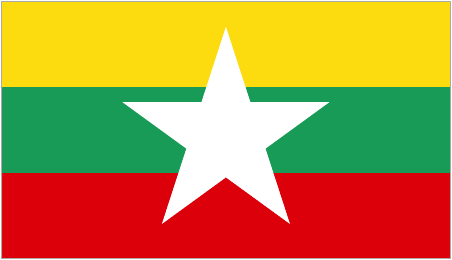 Date? - Dat Pon Zon Aung Min Gaung Monastery, Rangoon (Myanmar). "Originally bulit by Sayadaw U Thila Wunta, who participated in building most of what can be found in the monastery grounds..." /// "Today, surrounding the reconstructed central pagoda, there are now some 174 smaller pagodas. Buildings for monks & lay meditators have also sprung up throughout the grounds. The original five acres has been transformed over the years into a thriving monastic complex, known as Dat Pon Zon Aung Min Gaung Monastery, firmly centered in the Weizzer meditation tradition." Date? - Dat Pon Zon Aung Min Gaung Monastery, Rangoon (Myanmar). "Originally bulit by Sayadaw U Thila Wunta, who participated in building most of what can be found in the monastery grounds..." /// "Today, surrounding the reconstructed central pagoda, there are now some 174 smaller pagodas. Buildings for monks & lay meditators have also sprung up throughout the grounds. The original five acres has been transformed over the years into a thriving monastic complex, known as Dat Pon Zon Aung Min Gaung Monastery, firmly centered in the Weizzer meditation tradition."
|



|  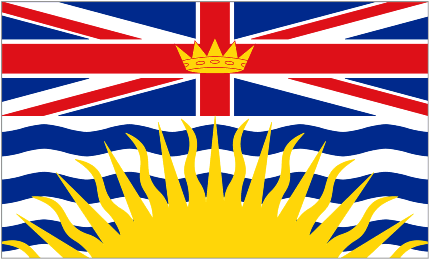 1982 - World Peace Pagoda, Crystal Mountain Buddhist group, Galiano Island, British Columbia (Canada). "The group constantly maintains the stupa that the Venerable Sayadaw constructed in 1982." /// "A non-denominational society founded by students of Venerable Namgyal Rinpoche -- a Westerner trained in the Theravada & Vajrayana Buddhist traditions; to promote the development of the wholesome, clear, interested mind through study, meditation & compassionate work." 1982 - World Peace Pagoda, Crystal Mountain Buddhist group, Galiano Island, British Columbia (Canada). "The group constantly maintains the stupa that the Venerable Sayadaw constructed in 1982." /// "A non-denominational society founded by students of Venerable Namgyal Rinpoche -- a Westerner trained in the Theravada & Vajrayana Buddhist traditions; to promote the development of the wholesome, clear, interested mind through study, meditation & compassionate work."
|



|  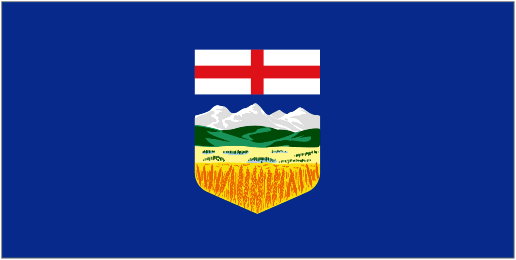 Date? - Peace Stupa, Edmonton, Alberta (Canada). "As for myself, my family and our friends and colleagues, we constantly maintain the stupa that the Venerable Sayadaw constructed at my home in Edmonton."
/// "The man on the left is Dr. Stephen Aung. He organized the Relic Tour in Edmonton & arranged the Vietnamese temple to host. He is an acupuncture master & also a chi-gong master, a very special person. He has a personal mission of building peace stupas (monuments symbolizing enlightenment with precious items inside such as relics of Buddhis masters) all around the world, fulfilling his teacher’s wish to build a stupa in every continent." Date? - Peace Stupa, Edmonton, Alberta (Canada). "As for myself, my family and our friends and colleagues, we constantly maintain the stupa that the Venerable Sayadaw constructed at my home in Edmonton."
/// "The man on the left is Dr. Stephen Aung. He organized the Relic Tour in Edmonton & arranged the Vietnamese temple to host. He is an acupuncture master & also a chi-gong master, a very special person. He has a personal mission of building peace stupas (monuments symbolizing enlightenment with precious items inside such as relics of Buddhis masters) all around the world, fulfilling his teacher’s wish to build a stupa in every continent."
|

| 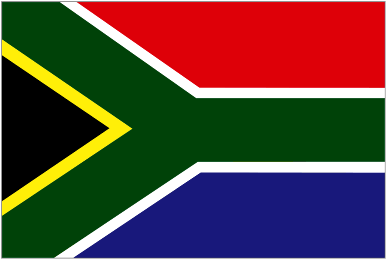 December 7, 2000 -
South African Peace Pagoda, The Manger, Barrydale, Western Cape Province (South Africa). Only peace pagoda in Africa. Consecrated by Sayadaw U Thila Wunta, eminent 90-year-old Burmese monk. "A gift he had long wanted to bestow on Africa, thus completing his dream and mission to promote peace and harmony in every continent of the world.... The building of this seven-meter tall gold structure, crowned with a spherical crystal and copper umbrella, was achieved in three weeks by Sayadaw, three Burmese Monks, 20 Canadians, and several local people." December 7, 2000 -
South African Peace Pagoda, The Manger, Barrydale, Western Cape Province (South Africa). Only peace pagoda in Africa. Consecrated by Sayadaw U Thila Wunta, eminent 90-year-old Burmese monk. "A gift he had long wanted to bestow on Africa, thus completing his dream and mission to promote peace and harmony in every continent of the world.... The building of this seven-meter tall gold structure, crowned with a spherical crystal and copper umbrella, was achieved in three weeks by Sayadaw, three Burmese Monks, 20 Canadians, and several local people."
 
|


| 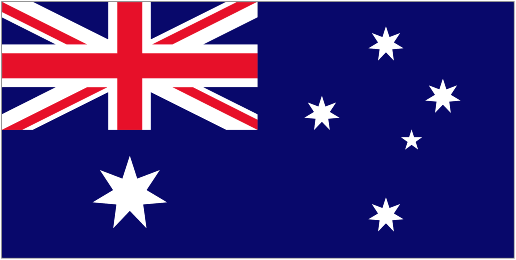 2001 - Peace Pagoda, Origins Centre, Balingup, Western Australia (Australia). "Visitors traditionally walk clockwise around the pagoda & add their thoughts to world peace.
The pagoda came about through the centre’s association with a Burmese Buddhist order.
Anne Clarke, who works at the centre, said Sayadaw U Thila Wuntu’s work was to travel the world & build monuments to world peace – one on each continent.The Origins Centre maintained contact with Sayadaw U Thila Wuntu [1912-2011] for many years. Then, after a period of not hearing from him, he contacted the centre to ask if they could build a peace pagoda." 2001 - Peace Pagoda, Origins Centre, Balingup, Western Australia (Australia). "Visitors traditionally walk clockwise around the pagoda & add their thoughts to world peace.
The pagoda came about through the centre’s association with a Burmese Buddhist order.
Anne Clarke, who works at the centre, said Sayadaw U Thila Wuntu’s work was to travel the world & build monuments to world peace – one on each continent.The Origins Centre maintained contact with Sayadaw U Thila Wuntu [1912-2011] for many years. Then, after a period of not hearing from him, he contacted the centre to ask if they could build a peace pagoda."
|
![]()
|  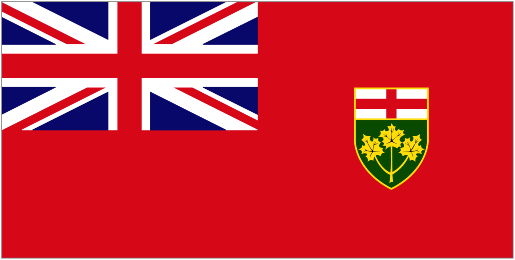 Date? - Dharma Centre of Canada, Kinmount, Ontario (Canada). "Founded by the Venerable Namgyal Rinpoche in 1966, the Dharma Centre of Canada is an extended community Which maintains a study and meditation facility north of Toronto." Date? - Dharma Centre of Canada, Kinmount, Ontario (Canada). "Founded by the Venerable Namgyal Rinpoche in 1966, the Dharma Centre of Canada is an extended community Which maintains a study and meditation facility north of Toronto."
|









